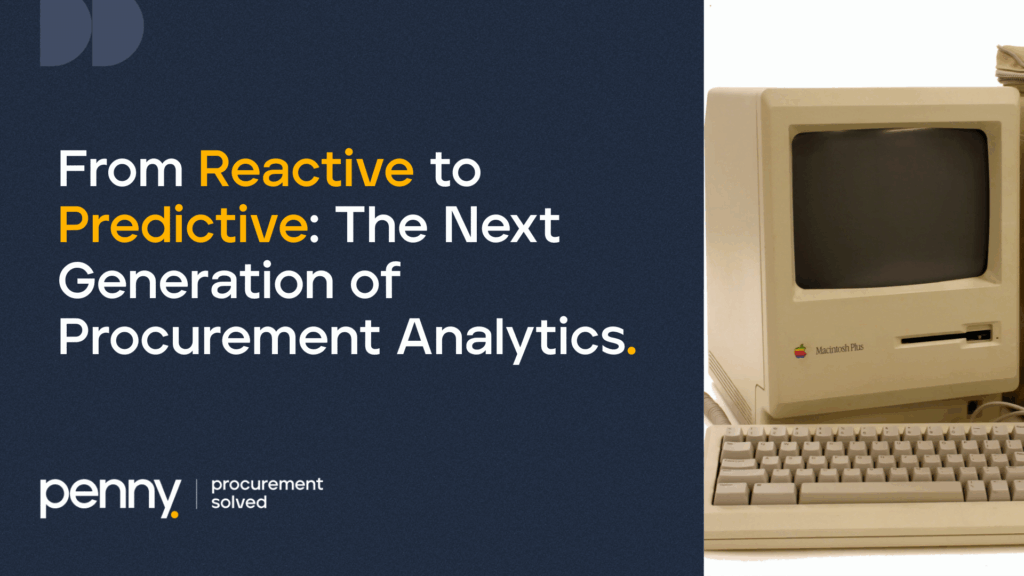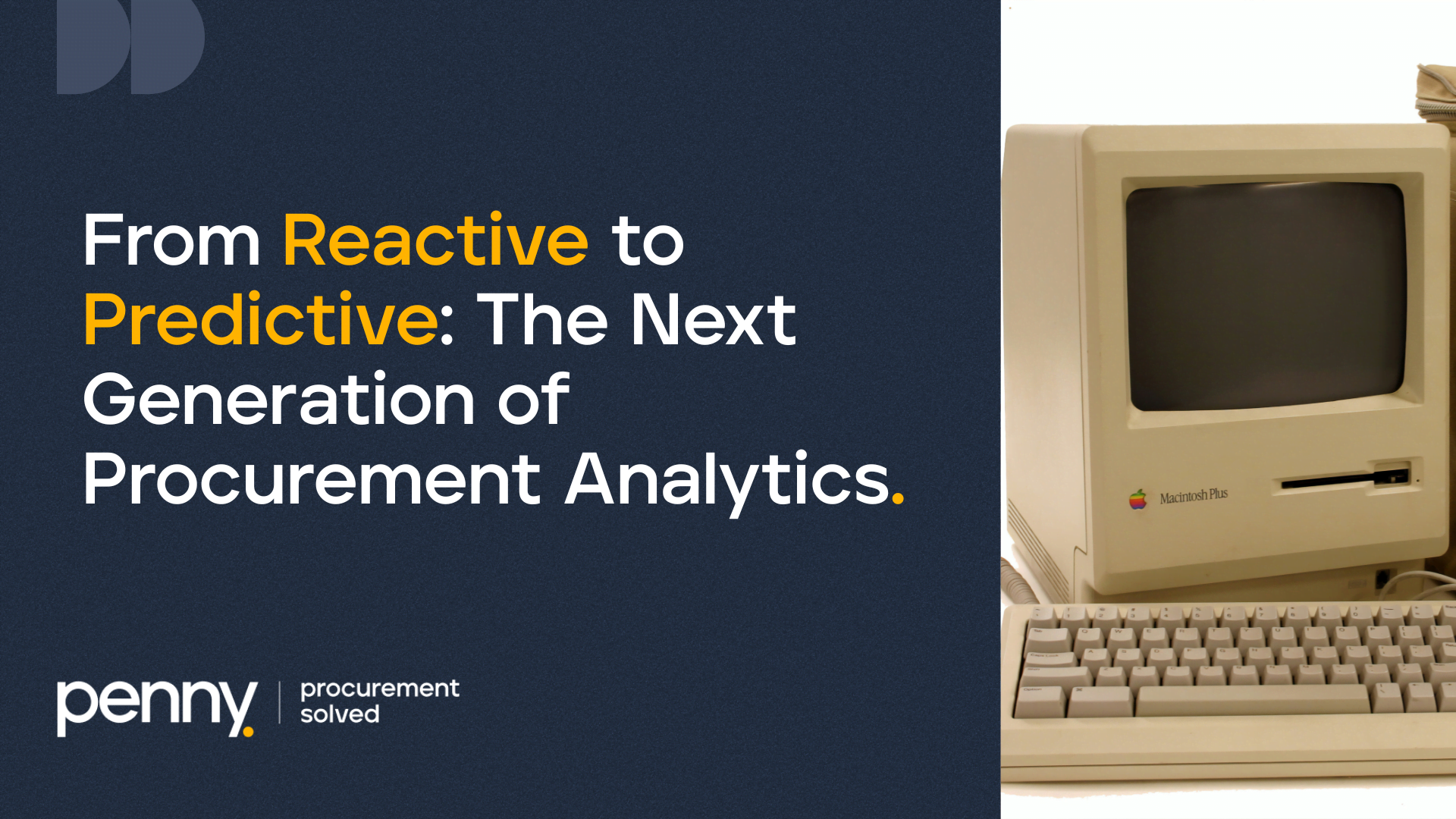
Procurement used to be about reacting. When a purchase request arrived, teams would process it, approve it, and move on. When a supplier failed to deliver, teams would respond with urgency and damage control. When the budget ran out, finance would investigate after the fact.
But in today’s fast-moving economy, reacting is not enough. The organizations that thrive are those that anticipate. They see risks before they surface, and they turn data into foresight. This is where the next generation of procurement analytics is transforming how leaders think, decide, and act.
We are moving from reactive to predictive procurement from looking back to looking ahead.
The Problem with Looking Backward
Most procurement systems still operate in a backward-looking mode. They collect data after transactions happen and use reports to explain what went wrong or where savings were achieved.
But this retrospective view, while helpful, is limited. It does not tell you when a supplier might default next quarter, which contract categories are at risk of price inflation, or which departments consistently overspend.
As a result, organizations spend enormous effort analyzing the past without improving the future. By the time the insights arrive, the opportunity to act has already passed.
The Shift to Predictive Procurement
Predictive procurement analytics represents a fundamental mindset change. Instead of answering “what happened,” it answers “what will happen” and “what should we do about it.”
Using artificial intelligence, machine learning, and advanced data models, predictive systems continuously monitor supplier performance, price trends, and operational patterns. They generate early warnings and data-driven recommendations before problems arise.
Imagine a system that tells you:
- “Supplier A has a 70 percent likelihood of late delivery next month based on performance trends.”
- “Your MRO category spend is projected to exceed budget by 15 percent within 45 days.”
- “Raw material prices are likely to rise by 9 percent next quarter; consider early purchase.”
These are not futuristic scenarios they are real examples of how predictive analytics is already shaping procurement excellence.
Data Is the New Procurement Currency
The foundation of predictive procurement is clean, integrated data. Disconnected spreadsheets, emails, and legacy ERPs cannot feed the algorithms that make prediction possible.
Smart procurement platforms such as Penny unify data across departments, suppliers, and projects. Every request, quote, purchase order, and invoice becomes part of a single, structured dataset.
This level of visibility allows algorithms to recognize patterns that humans cannot. Over time, the system learns it understands the rhythm of your operations, detects anomalies, and provides proactive insights that empower decision-makers.
Data becomes not only the record of what happened but the engine that drives what comes next.
From Reporting to Intelligence
Procurement teams traditionally spend countless hours preparing reports. Predictive analytics replaces static reporting with continuous intelligence.
Instead of exporting spreadsheets, teams now view dynamic dashboards that evolve in real time. The system flags deviations, alerts managers, and recommends next steps.
For example:
- A sudden increase in average supplier lead time triggers an alert.
- Repeated small purchases from non-preferred vendors are automatically highlighted.
- The system recommends consolidating spend across similar suppliers to negotiate better terms.
This level of intelligence transforms procurement from an operational function into a strategic advisory role within the organization.
Forecasting Risk and Resilience
Procurement is at the front line of business risk. Supply chain disruptions, currency fluctuations, and geopolitical events can all affect delivery and cost.
Predictive analytics provides early warnings that allow leaders to prepare rather than react. It can model multiple scenarios for, example, how a ten percent rise in steel prices would impact total project costs or how supplier delays might affect cash flow.
By anticipating outcomes, organizations can shift from firefighting to planning. Risk becomes manageable, not mysterious.
And resilience becomes measurable.
AI-Powered Decision-Making
Artificial intelligence in procurement analytics is not just about prediction; it is about prescription. AI can recommend specific actions based on probability and context.
It can suggest alternative suppliers when delivery risks appear, forecast the best time to issue tenders, or even recommend splitting contracts to mitigate exposure.
At Penny, we see customers using AI-driven insights to reduce unplanned costs, improve supplier performance, and shorten procurement cycles. The combination of predictive modeling and human judgment delivers a new form of decision intelligence that no spreadsheet can replicate.
The Competitive Advantage of Being Predictive
The move from reactive to predictive procurement is not a luxury; it is a competitive necessity.
Organizations that embrace predictive analytics enjoy faster decisions, lower costs, and fewer disruptions. They operate with clarity while competitors operate with guesswork.
In many ways, predictive procurement represents the next major productivity revolution. It does not just make processes efficient; it makes them intelligent. It gives leaders time the most valuable asset in business by turning uncertainty into foresight.
The Role of Platforms Like Penny
Penny’s analytics engine was built with this future in mind. It integrates data from every stage of the procurement lifecycle, visualizes it in real time, and applies predictive algorithms to help organizations act ahead of time.
Whether you are monitoring supplier risk, forecasting spend, or optimizing working capital, Penny turns fragmented data into meaningful insight.
Predictive procurement is no longer theoretical. It is here and it is already defining how world-class organizations operate.
Call to Action
If your procurement strategy still depends on after-the-fact reporting, it is time to move ahead.
Book a session with Penny’s team to explore how predictive analytics can transform your procurement function from reactive to strategic.
Discover how data-driven foresight can help your organization save costs, reduce risk, and unlock performance before the numbers appear.

